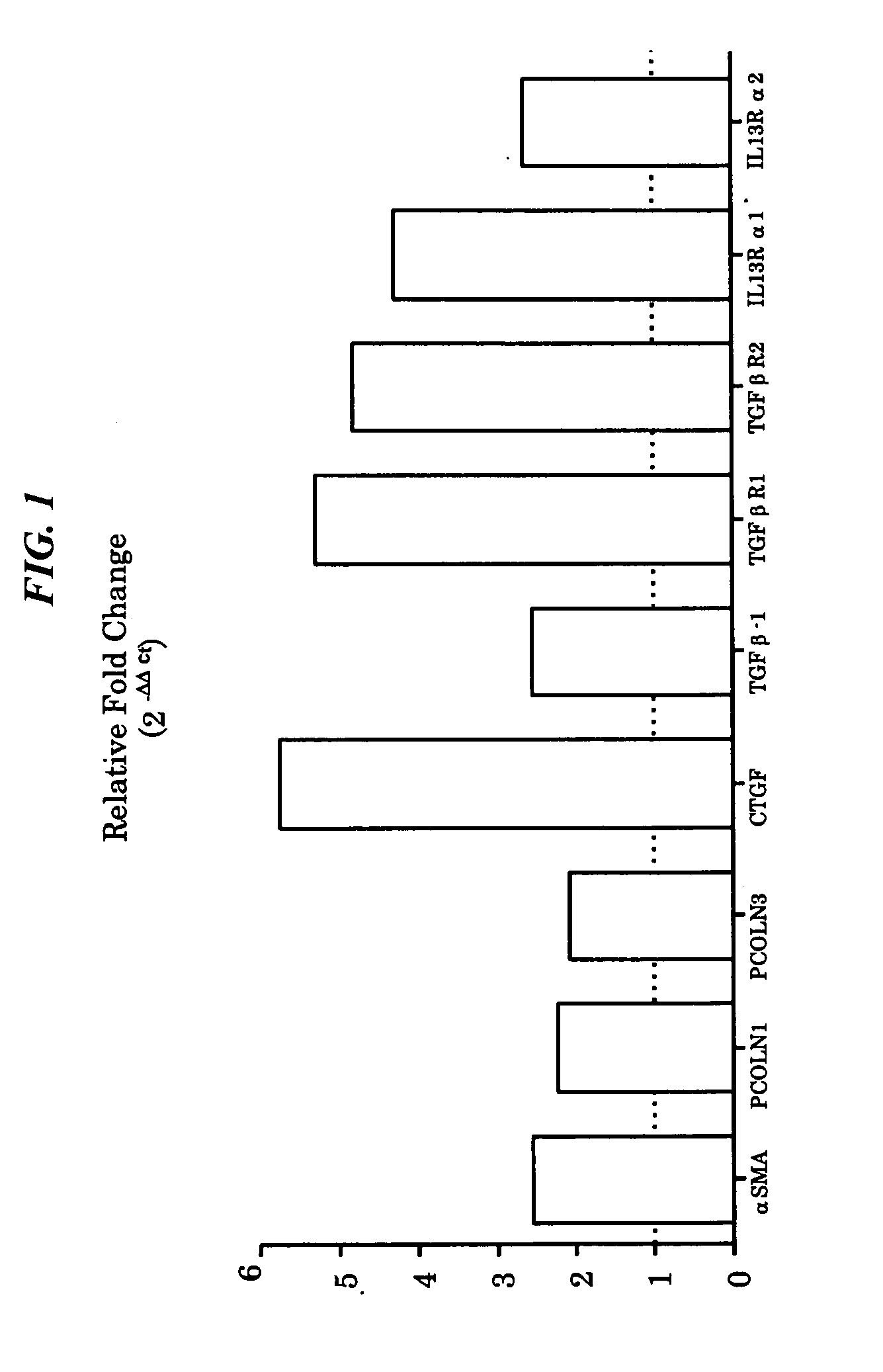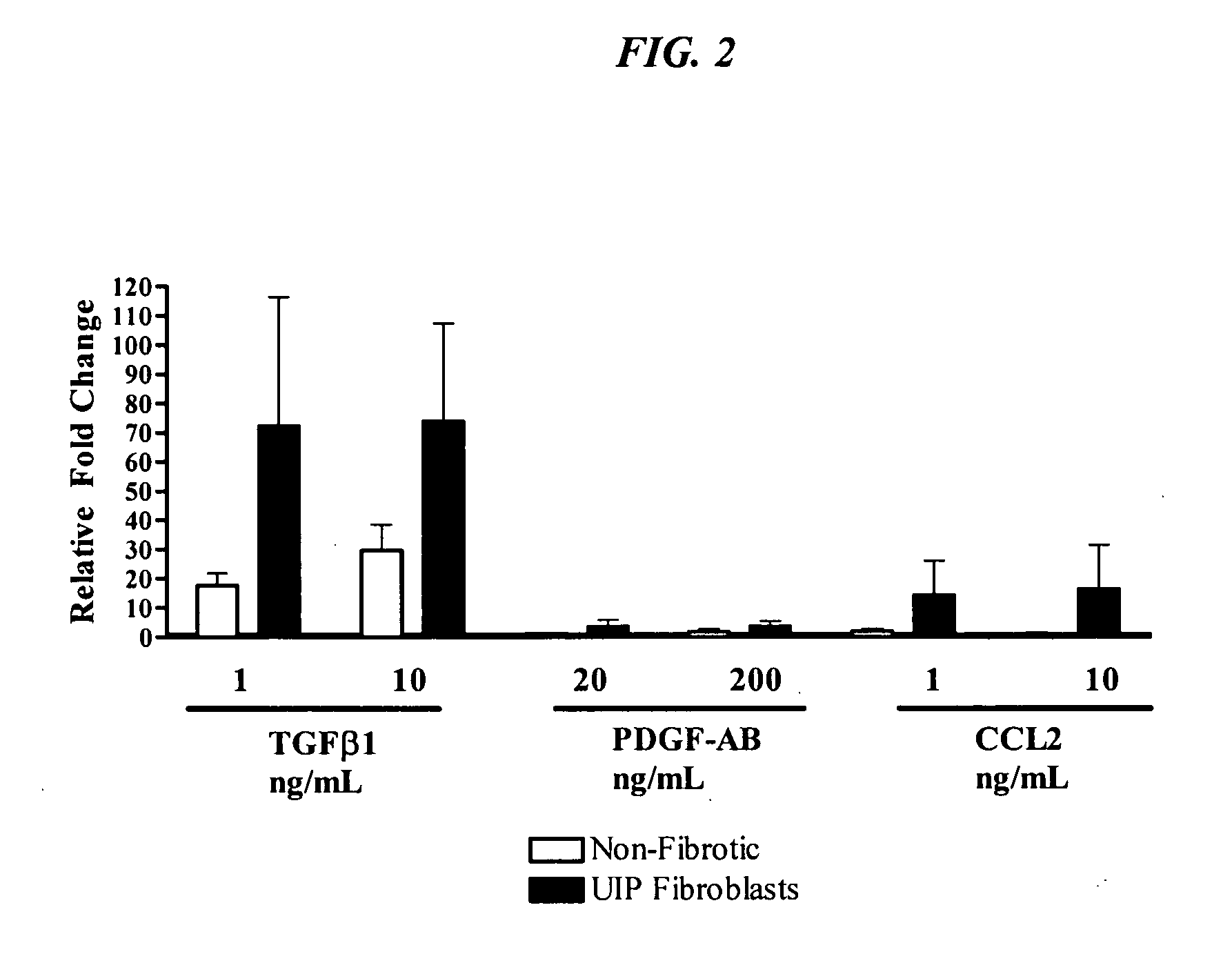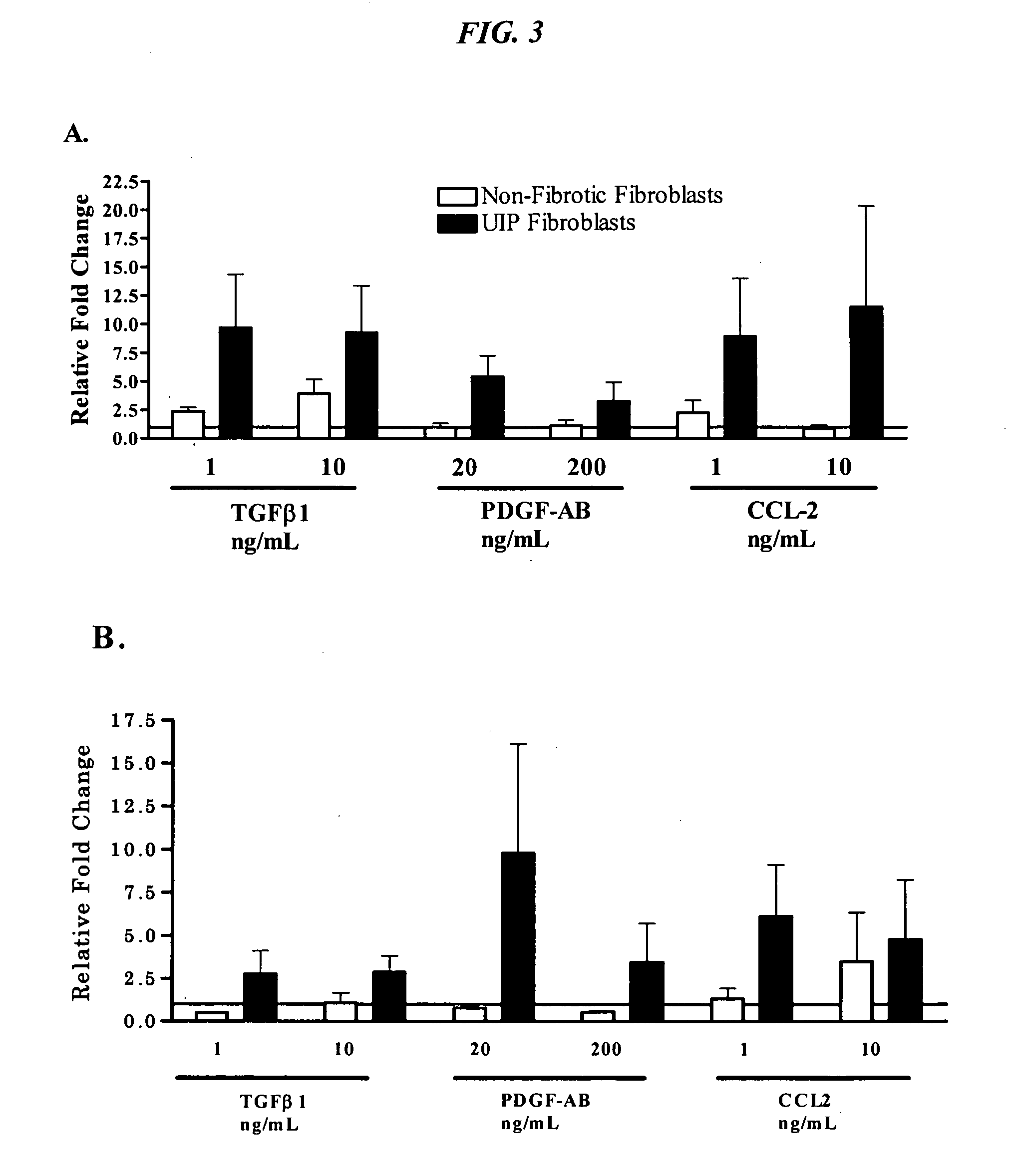Ccr2 antagonists for treatment of fibrosis
a technology of fibroblasts and ccr2, which is applied in the field of fibroblasts for treatment of fibrosis, can solve the problems of reducing the elasticity of the lung, retraction and ultimate collapse of the normal alveolar structure, and myofibroblasts may therefore potentially contribute to alveolar collapse, so as to prevent the biological function or bioactivity associated
- Summary
- Abstract
- Description
- Claims
- Application Information
AI Technical Summary
Problems solved by technology
Method used
Image
Examples
example 1
Fibrotic and Non-Fibrotic Fibroblasts
[0117]In order to characterize the inherent properties of fibroblasts from UIP patients as compared to those from histopathologically non-fibrotic lung tissue, primary fibroblasts from one or the other type of tissue are assessed for markers in the unstimulated state and in response to known mediators of fibrotic pathology, e.g. TGFbeta, PDGF-AB, and CCL2.
Fibroblast Isolation and Purification
[0118]Cell lines were provided by Dr Cory Hogaboam at the University of Michigan. All of the primary fibroblast lines were isolated as previously described (Hogaboam et al. 1999 J Immunol 163(4):2193-201). Pulmonary fibroblasts were isolated from lung biopsies taken from UIP patients (n=4) and these are referred to as “fibrotic fibroblasts”. Fibroblasts were also isolated from lung tissue taken during lung tumor resection (n=5) and these samples were confirmed to be non-fibrotic by histological analysis. These non-fibrotic tissue derived fibroblasts are refer...
example 2
[0128]Lung tissue from IPF and non-fibrotic patients was minced and put into a T75 cm tissue culture flask with 20 ml of media (DMEM w / 15% FCS, 1% PSA, & L-Glutamine) Media was changed twice a week until cell colonies formed. Cells were detached and passaged. Experiments were performed after passage number five.
RNA isolation
Fibroblasts were cultured overnight in DMEM 15% FCS 1% Glutamax, 1% penicillin streptomycin at 1×105 cells in 500 ul / well of a 24 well plate. Cells were cultured for 24 hrs. in DMEM without serum. The medium was changed to DMEM supplemented with human serum albumin and cultures were incubated for 24 and / or 48 hrs. To harvest RNA, cultured cells were lysed using RNeasy mini kit (Qiagen, Inc. Valencia, Calif.) as per manufacturer's instructions. The RNA quality and quantity was determined with the 2100 BioAnalyzer (Agilent Technologies, Palo Alto, Calif.).
PUM
| Property | Measurement | Unit |
|---|---|---|
| pore sizes | aaaaa | aaaaa |
| pore sizes | aaaaa | aaaaa |
| soluble | aaaaa | aaaaa |
Abstract
Description
Claims
Application Information
 Login to View More
Login to View More - R&D
- Intellectual Property
- Life Sciences
- Materials
- Tech Scout
- Unparalleled Data Quality
- Higher Quality Content
- 60% Fewer Hallucinations
Browse by: Latest US Patents, China's latest patents, Technical Efficacy Thesaurus, Application Domain, Technology Topic, Popular Technical Reports.
© 2025 PatSnap. All rights reserved.Legal|Privacy policy|Modern Slavery Act Transparency Statement|Sitemap|About US| Contact US: help@patsnap.com



